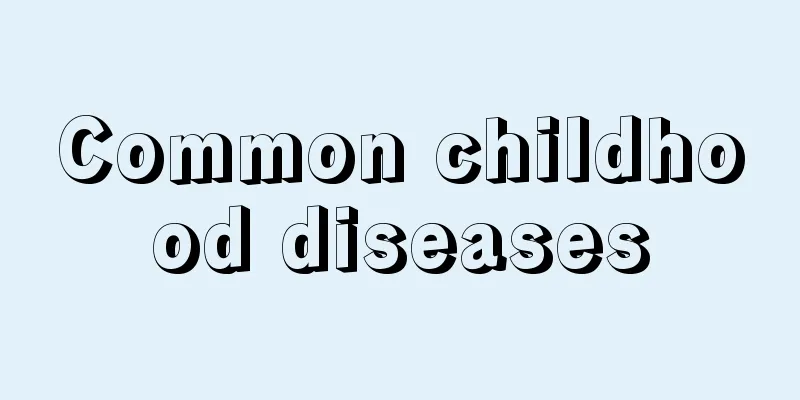What to do if your 2-year-old baby gets heatstroke

|
When your 2-year-old baby suffers from heatstroke, it is quite serious. After all, the baby's body is weaker than that of a normal person. If this happens, the recovery will be slower. Therefore, the best way is to reduce the heat first, let the baby lie down flat, and you can also use ice compresses, which can cool down the baby faster. 1. Treatment of pre-heatstroke and mild heatstroke Immediately move the patient to a cool and ventilated place or under an electric fan, preferably to an air-conditioned room, to increase radiant heat dissipation, give cool salt drinks, and apply cold compresses to those with high body temperature. 2. Treatment of severe heat stroke (1) Cooling therapy Rapid cooling is the first priority of treatment. 1) External cooling: quickly leave the high temperature and high humidity environment, transfer to a ventilated and cool place, lay the patient flat and remove all clothes, massage the skin and muscles to promote heat dissipation. For those without circulatory disorders, cool down by taking an ice water bath or immersing the body in 27℃~30℃ water. For those with circulatory disorders, use evaporative heat dissipation to cool down. Wipe the skin repeatedly with cold water and use electric fans or air conditioners to speed up evaporation. 2) Internal cooling: If external cooling is ineffective, use ice saline for gastric or rectal lavage, sterile saline for peritoneal lavage or hemodialysis, or cool the autologous blood outside the body and then return it to the body for cooling. 3) Drug cooling: When the patient has chills, intravenous infusion of chlorpromazine can be used and blood pressure can be monitored at the same time. (2) Symptomatic treatment 1) The airway of comatose patients should be kept open, oxygen should be given, and endotracheal intubation should be performed if necessary. 2) Actively correct water and electrolyte disorders and maintain acid-base balance. 3) The rate of fluid replacement should not be too fast to avoid triggering heart failure. If heart failure occurs, fast-acting digitalis preparations should be used. 4) Use pressor drugs to correct shock. 5) Patients suspected of cerebral edema should be given mannitol for dehydration. 6) Patients with acute renal failure can undergo hemodialysis. 7) When disseminated intravascular coagulation occurs, heparin should be used as appropriate, and antifibrinolytic drugs should be added if necessary. 8) Adrenal cortical hormones have certain effects on the body's stress and tissue response caused by high temperature, as well as on the prevention and treatment of cerebral edema and pulmonary edema. However, the dosage should not be too large and the medication time should not be too long to avoid secondary infection. 9) Actively prevent and treat infection. (3) Monitoring 1) Body temperature monitoring: Continuously monitor body temperature changes during cooling. 2) Monitor urine output: maintain urine output > 30 ml/hour. 2) Coagulation function monitoring: Closely monitor prothrombin time, partial thromboplastin time, platelet count and fibrinogen. |
<<: 2 and a half years old bedwetting
>>: Can babies eat raw cucumbers?
Recommend
What should I do if my child’s lead content exceeds the standard?
Children's bodies have no resistance to some ...
Symptoms of calcium deficiency in 8-year-old children
Eight-year-old children are prone to calcium defi...
What to do if your baby is allergic to mango
If a baby is allergic to mangoes, he or she will ...
What should I do if my child always complains of stomachache?
Children's stomachs are not in good condition...
Treatment options for children with amblyopia
With the increase in the use of electronic produc...
My four-month-old baby still has a little shaking head
After the baby is born, as the baby grows older, ...
What is the cause of rapid breathing in infants?
The birth of a baby brings happiness and joy to e...
Five tips to improve your child's intelligence
Smart babies are not born with high IQs. In addit...
Green stool after baby has fever
In the early stages of growth and development, ba...
What can’t babies with eczema eat? Don't eat wrong again in the future
If the baby has eczema, parents must be extra car...
There are small granules on the child's cheeks
Children's skin is different from adults'...
What should I do if my baby cries and holds his breath?
I became a mother a few months ago. As a first-ti...
Symptoms of milk allergy in newborns and ways to prevent allergies
It is not easy for newborns to be allergic to mil...
Can children eat donkey meat?
Donkey meat is a food that causes inflammation. E...
What kind of desk lamp is good for children?
Children are the flowers of the motherland. Child...









